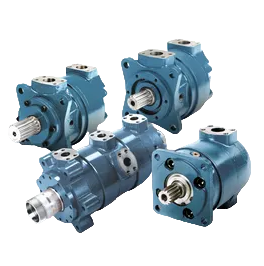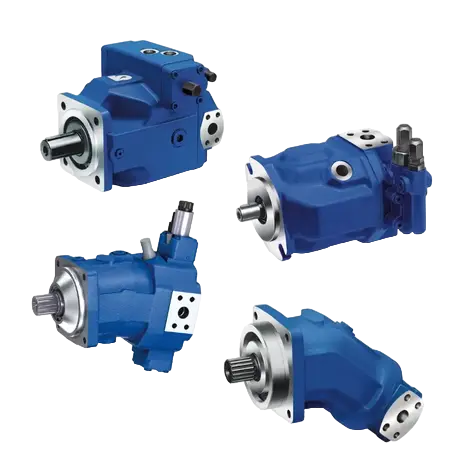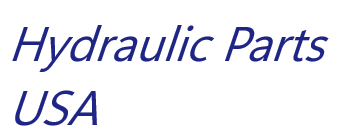Repairs
Efficient. Experienced. Reliable.
Repair Warranty
- 1 Year Warranty on Pumps and Motors
- 1 Year Warranty on Controllers and Valves
- 1 Year Warranty on Power Units
- 1 Year Warranty on Hydraulic Accessories
Repair Time
- 1-2 Week Standard Repair Time
- 4-6 Day Standard Rush Repair Time
- 1 Day Rush Repair Time on Select Units
- Emergency Repair Time Available for Select Units Only
- Repair Time and Cost Estimates Available Before Shipping
Request a Repair
Products We Repair
Motors

Gear motors are a type of hydraulic motor that uses a gear set to convert hydraulic pressure into rotational force. The gear set consists of two or more gears that mesh together and rotate in opposite directions. As hydraulic fluid is pumped into the motor, it enters the gear set and causes the gears to rotate. This rotation is then transferred to a shaft, which can be used to power a variety of mechanical devices. Hydraulic gear motors are commonly used in industrial and mobile applications, such as construction equipment, agricultural machinery, and material handling systems. They are known for their high efficiency, compact size, and reliable performance.
A hydraulic piston motor is a type of hydraulic motor that converts hydraulic pressure into rotational mechanical energy. It consists of a cylinder block, pistons, and a drive shaft. The cylinder block contains a series of pistons that are connected to the drive shaft. When hydraulic fluid is introduced into the cylinder block, it pushes the pistons, which in turn rotate the drive shaft. The rotational speed and torque of the motor are determined by the amount of hydraulic pressure and the size of the pistons. Hydraulic piston motors are commonly used in heavy machinery and equipment, such as construction equipment, agricultural machinery, and industrial machinery.
The vane motor is a type of hydraulic motor that uses a series of vanes to rotate a central shaft. The vanes are located inside a circular housing and are free to move in and out of the housing as the shaft rotates. As hydraulic fluid is pumped into the housing, it pushes against the vanes, causing them to rotate the shaft. The rotation of the shaft can be used to power a variety of mechanical devices, such as pumps, fans, and compressors. Hydraulic vane motors are known for their high efficiency and reliability, making them a popular choice for many industrial applications.
Pumps

A hydraulic gear pump is a type of positive displacement pump that uses meshing gears to pump fluid. The fluid is trapped in the gear teeth and carried from the inlet side to the outlet side of the pump. The gears are typically made of steel or cast iron and are supported by bearings on both sides. The pump is driven by a motor or engine and can be used in a variety of applications, including hydraulic systems for industrial machinery, construction equipment, and agricultural machinery. The flow rate of the pump is determined by the size of the gears and the speed at which they rotate. Hydraulic gear pumps are known for their efficiency, reliability, and durability.
The hydraulic piston pump is a type of positive displacement pump that uses reciprocating pistons to move fluid through a hydraulic system. The pump consists of a cylinder block with several pistons that move back and forth inside the cylinder. As the pistons move, they create a vacuum that draws fluid into the cylinder and then pressurizes it to move it through the system. Hydraulic piston pumps are commonly used in heavy machinery and industrial applications where high pressure and high flow rates are required. They are known for their efficiency, reliability, and long service life.
A vane pump is a type of positive displacement pump that uses a circular rotor with vanes to create suction and discharge fluid. The rotor is eccentrically mounted within a cylindrical housing, and as it rotates, the vanes slide in and out of the rotor slots, creating chambers that draw in and expel fluid. The pump is driven by an external power source, such as an electric motor or an internal combustion engine, and is commonly used in hydraulic systems to provide high-pressure fluid flow for various applications, such as lifting heavy loads, powering machinery, and controlling motion. Hydraulic vane pumps are known for their efficiency, reliability, and low noise levels, making them a popular choice in many industries.
Valves

The hydraulic check valve is a type of valve that allows fluid to flow in one direction only. It is designed to prevent backflow and maintain system pressure. The valve contains a spring-loaded disc that opens when fluid flows in the desired direction and closes when the flow reverses. This prevents the fluid from flowing back and causing damage to the system. Hydraulic check valves are commonly used in hydraulic systems to prevent damage to pumps, motors, and other components. They are available in a variety of sizes and configurations to suit different applications.
A hydraulic flow control valve is a device used to regulate the flow of hydraulic fluid in a hydraulic system. It is designed to control the speed and direction of the fluid as it moves through the system. The valve is typically made up of a housing, a spool, and a control mechanism. The spool is moved by the control mechanism to adjust the size of the opening in the valve, which in turn regulates the flow of fluid. This type of valve is commonly used in applications where precise control of fluid flow is required, such as in industrial machinery, construction equipment, and agricultural machinery.
Hydraulic pressure control valve is a component used in hydraulic systems to regulate the pressure of the fluid. It is designed to maintain a constant pressure level within the system, regardless of changes in the load or flow rate. The valve works by adjusting the flow of fluid through the system, either by opening or closing a passage or by adjusting the size of an orifice. This allows the pressure to be controlled within a specific range, ensuring that the system operates efficiently and safely. Hydraulic pressure control valves are commonly used in a variety of applications, including industrial machinery, construction equipment, and automotive systems.
Controllers

A hydraulic amplifier card/module is an electronic device that is used to amplify the hydraulic signals in a hydraulic system. It is designed to control the flow of hydraulic fluid in a hydraulic system by adjusting the pressure and flow rate of the fluid. The hydraulic amplifier card/module is typically used in hydraulic systems that require precise control of the fluid flow, such as in industrial machinery and equipment. It is a compact and reliable device that is easy to install and maintain
The joystick is a control device used to operate hydraulic systems. It consists of a lever that can be moved in different directions to control the flow of hydraulic fluid. The joystick is connected to a hydraulic valve that regulates the pressure and flow of the fluid. Hydraulic joysticks are commonly used in heavy machinery such as excavators, cranes, and bulldozers. They provide precise control over the movement of the machine, allowing operators to perform complex tasks with ease. The joystick is designed to be ergonomic and easy to use, with a comfortable grip and intuitive controls. Overall, hydraulic joysticks are an essential component in many hydraulic systems, providing reliable and efficient control over heavy machinery.
A hydraulic mobile electronic controller is a device that controls the hydraulic system of a mobile machine. It is an electronic control unit that manages the flow of hydraulic fluid to various components of the machine, such as the hydraulic motor, cylinders, and valves. The controller receives input signals from sensors and other devices, and uses this information to adjust the hydraulic system to meet the desired performance requirements. It can also provide diagnostic information and fault codes to help with troubleshooting and maintenance.




